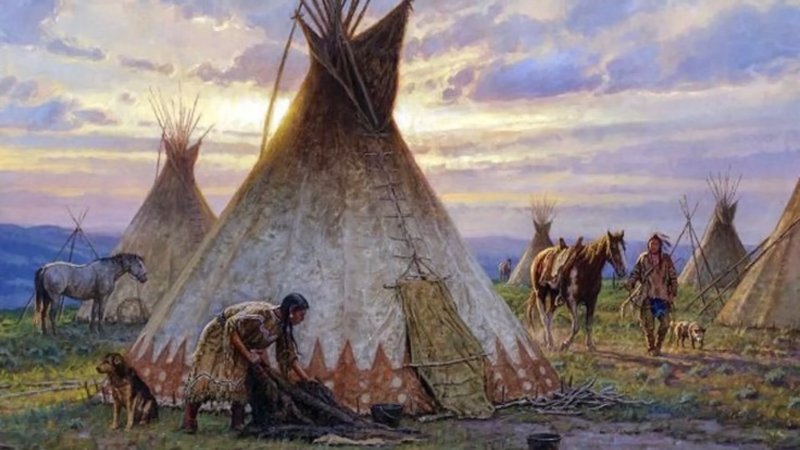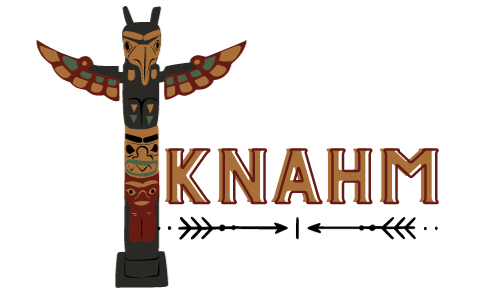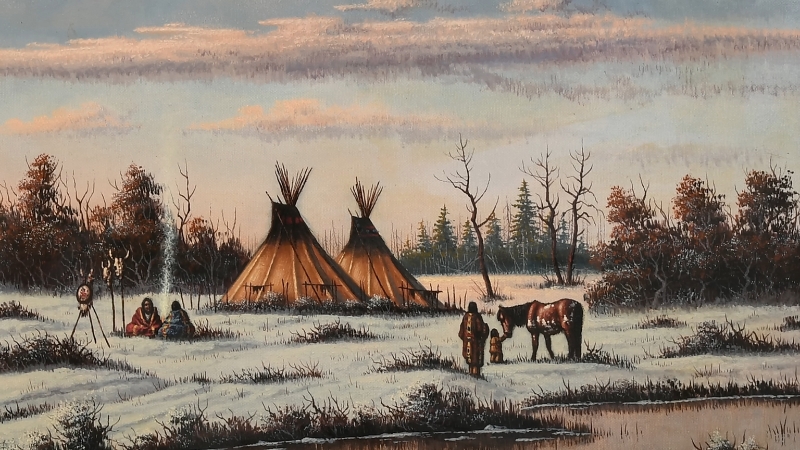The tipi stood at the heart of Lakota life. It was not only a shelter but a living symbol of the people’s connection to nature, spirituality, and social order.
Its design reflected a deep understanding of the plains’ environment and the belief that every part of life, family, wind, sun, and earth, was connected.
The structure’s mobility mirrored the Lakota’s seasonal movement following the buffalo, while its circular form embodied harmony and continuity.
Structure and Construction

Building a Lakota tipi required precision, teamwork, and respect for materials. Women were traditionally responsible for its construction, using buffalo hides or later canvas stretched over a frame of long lodgepole pine poles.
A typical family tipi measured between 12 and 18 feet in diameter, large enough to house several people comfortably yet easy to dismantle and transport.
The poles, usually numbering between 12 and 18, formed the skeleton. Three main poles were first tied together and raised to create the tripod.
The others were added in a circular pattern to complete the conical frame. The covering, once made from 12 to 20 buffalo hides sewn together, was wrapped around the poles and secured with wooden pegs and lacing pins.
A smoke hole was left at the top, controlled by two adjustable flaps that could be maneuvered with poles from inside. This design allowed smoke from the central fire to escape while controlling airflow and temperature.
The fire in the center was more than a heat source; it was the spiritual heart of the home.
Element
Material
Function
Symbolic Meaning
Poles
Lodgepole pine
Structure and support
Connection between Earth and Sky
Hide or canvas cover
Buffalo hide (later canvas)
Protection the from weather
Strength and continuity
Smoke flaps
Hide extensions with poles
Ventilation
Breath of life, communication with spirits
Lacing pins
Wood or bone
Securing the cover
Binding of family and spirit
Central fire
Wood (often cottonwood)
Warmth and light
Spiritual center of the home
Interior Layout and Symbolism

Inside the tipi, every position had meaning. The entrance faced east toward the rising sun, a daily renewal of life and purpose.
The owner or elder typically sat opposite the entrance in the west, facing the light. Sacred objects and family possessions were placed behind him, representing wisdom and tradition.
Sleeping areas were arranged clockwise, respecting the sacred direction of movement in Lakota rituals. The left side of the tipi was reserved for men and guests, while the right side was for women and domestic tools.
Above the door, symbols or painted designs often expressed personal visions, tribal stories, or achievements in hunting or war.
A single fire pit in the center unified the family’s daily rhythm. Meals, storytelling, and ceremonies revolved around it.
The circular arrangement reinforced equality within the family; no one sat above or below another, mirroring the broader Lakota value of balance and mutual respect.
Adaptation and Environmental Design
The tipi’s brilliance lay in its adaptability. During cold winters, the cover could be lowered closer to the ground, trapping heat efficiently.
In summer, the bottom edges were lifted to allow air to circulate. The pointed design broke strong plains winds, while the smoke flaps could be angled to maintain ventilation.
The conical structure distributes weight evenly, preventing collapse even under heavy rain or snow. Its aerodynamic form also allowed quick drainage during storms.
Portability was vital to the Lakota, whose movements followed the buffalo herds. When it was time to move, the poles were bundled together to form a travois that horses pulled, carrying the tipi cover and family belongings across the prairie.
Season
Tipi Adjustment
Purpose
Winter
Lowered sides, thick lining of hides
Heat retention
Summer
Raised sides for airflow
Cooling and ventilation
Windy conditions
Angled smoke flaps
Stability and draft control
Rain
Steeper pole angle
Water runoff
Artistic and Spiritual Dimensions
View this post on Instagram
Beyond its practical design, the tipi was a canvas of identity and spirituality. Many families decorated the outside with symbols tied to dreams, visions, or tribal affiliations.
The designs could include lightning bolts, suns, moons, and animals, each with a sacred meaning. A painted tipi told the family’s story: courage in battle, connection with a totem spirit, or gratitude to the natural forces that sustained life.
For women, crafting and maintaining the tipi was an act of devotion. The hide preparation, sewing, and upkeep reflected care for the family and respect for the earth that provided the materials.
Men might assist with poles and transportation, but the tipi itself was traditionally considered the woman’s domain, representing the womb of life and protection.
Ceremonies such as births, naming rituals, and healing rites often took place within the tipi’s circular boundaries. Its space was sacred yet domestic, linking the daily world with the spiritual realm.
Social and Communal Role
The tipi village represented a living social order. When encamped, tipis were arranged in circles, each family’s lodge forming part of the community ring.
The chief’s tipi stood near the center or at the eastern gate, symbolizing guidance and leadership.
The circle layout mirrored the Lakota worldview that life itself was circular, day and night, seasons, life, and death. Council meetings, dances, and storytelling occurred in the open space within the camp circle, reinforcing unity and shared purpose.
Camp Layout Element
Position
Symbolic Role
Chief’s tipi
East entrance
Leadership and sunrise direction
Warrior lodges
Southern arc
Strength and protection
Medicine tipis
Northern arc
Healing and wisdom
Council area
Center
Unity and decision-making
Decline and Cultural Continuity

By the late 19th century, government restrictions, forced relocations, and the slaughter of buffalo herds made traditional tipi living harder to sustain.
Canvas replaced buffalo hides, and fixed wooden houses replaced mobile lodges on reservations. Yet the tipi never disappeared.
Today, it remains a powerful symbol of Lakota identity, used in cultural gatherings, powwows, and educational programs.
Its geometry continues to inspire architects and designers seeking sustainable structures that blend efficiency, spirituality, and harmony with nature.
The tipi endures not just as an artifact but as a philosophy. It expresses the Lakota idea that life thrives when in balance, between people, the land, and the forces beyond sight.
Every pole and stitch carried meaning, every fire inside a promise that tradition and spirit could survive the winds of change.

